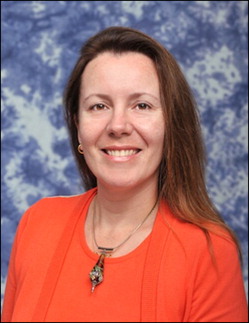First, let me start by saying how excited I am about being chosen by IDA and Maney Publishing to be the new Editor-In-Chief of the IDA Journal of Desalination and Water Reuse. Dr Jim Birkett has devoted much effort to making the Journal a success, and I am looking forward to taking the Journal to the next level and make it the premier journal in the field of desalination and water reuse.
Let me take this opportunity to tell you a bit about myself. I am a full professor in the Department of Chemical and Environmental Engineering at the University of Toledo, Ohio, USA. I received my doctoral degree from the University of Central Florida in 2000, and my research focused on biological stability of water produced by membrane separations. Since joining The University of Toledo, my research has focused on methods to improve separations through material development, material modifications and process modifications for the treatment of low quality waters at low costs. I have one patent on anti-microbial feed spacers for reverse osmosis spiral wound elements, have published over 50 articles in peer-reviewed journals, and my group has given over 100 presentations.
This first issue of 2014 includes some exciting manuscripts that will be of great interest to readers. Frank Westheimer, an American chemist and professor at Harvard University, once said that ‘a month in the laboratory can often save an hour in the library.’ This quote is quite applicable to the manuscript by J. Birkett, which looks back at Normandy’s application of multi-effect distillation to desalination, and discusses the past showing similarities to today’s issues. An article by M. Wofsey discusses a solar-radiance model to predict the efficiency of basin solar stills that has the potential to be useful especially in developing nations. Also with a focus on developing nations is the manuscript by Dhakal et al. The manuscript highlights some of the challenges for the implementation of desalination in water-scarce countries, with a focus on India, China and Algeria. The development of a novel polysulfone nanofiltration membrane coated with a chiral-modified chitosan compound with high flux and high rejection is the focus of the manuscript by Mu et al. Ng et al. discusses the water-energy nexus and proposes a hybridization of adsorption and nanofiltration processes. McGovern et al also focuses on a hybrid technology of electrodialysis with reverses osmosis as a novel and interesting alternative to treat high salinity waters. Lastly, Xie et al. proposes an interesting new process that involves direct contact seawater freezing desalination utilizing cold energy from liquid natural gas.
As the you, the reader, can see, much of this issue focuses on energy efficiency, issues of the future especially in the case of developing nations, and novel processes/materials. I hope readers will be as excited by these manuscripts as we were in reading them and working with authors to have them accepted.
In closing, I am excited about becoming the editor since the Journal focuses on two of the most important topics in water treatment, desalination and water reuse, with the capability of addressing the global water situation. Working with leading desalination authors and experts will also be a great perk of this new position, and I would like to invite all readers to submit manuscripts to our Journal.
I look forward to a long and fruitful collaboration with all readers of the Journal to make this the leading desalination publication in the world.
Dr Isabel C. [email protected]


